Through this path to find the perfect classic Sonnar I’m fast coming to the conclusion that all I’m actually doing is simply collecting Sonnars. I have no less than 8 already, 9 if you count the 50mm ZM Sonnar. The latest addition to the collection is an early 1960’s Jupiter-3.
For the time being at least I’ve decided to set aside any goals of finding any kind of conclusion to this, and just experiment with the lenses for a while. If I come to a conclusion further down the road, great; if not, the process itself is even more enjoyable than I expected it to be. I’ve also learned more than I anticipated already, and every lens I’ve taken photos with has produced results I’ve been pleased with. This Jupiter-3 has already been no exception to that, in fact – thanks to me having another bit of luck in the process of finding one – it’s actually exceeded expectations.
The Jupiter-3
I’ve actually shot with a Jupiter-3 before – I borrowed one of Lomography’s new Jupiter-3+ lenses a year or so ago and got some great results. At the time I didn’t quite see a place for such a lens when I was getting so much out of the ZM Sonnar. Since then, I’m sure it’s quite obvious that I’ve changed my mind a little – this whole process is about finding a lens to produce those sorts of results as an alternative to the much more modern look I get out of the ZM lens.
Looking back, I suspect the Jupiter-3+ played a part in seeding this idea in my head. But, even if they were still available I now don’t think I could swallow the £500 price tag now. This isn’t so much that I don’t think the new ones weren’t worth that sort of cash, but more about the fact my experience so far of using very cheap lenses to quite wonderful effect has given me a bit of a secondary goal of finding lenses I love for as little cash as possible. With these Russian lenses, I have been doing ok so far… though that goal might find itself going out of the window a little if and when I find myself exploring some of the Japanese options….
Anyway, I digress, one way or another I have come back to the Jupiter-3. Though rather than fork out the £500 for a new one, I bought an old one off eBay for the nice round sum of £101.
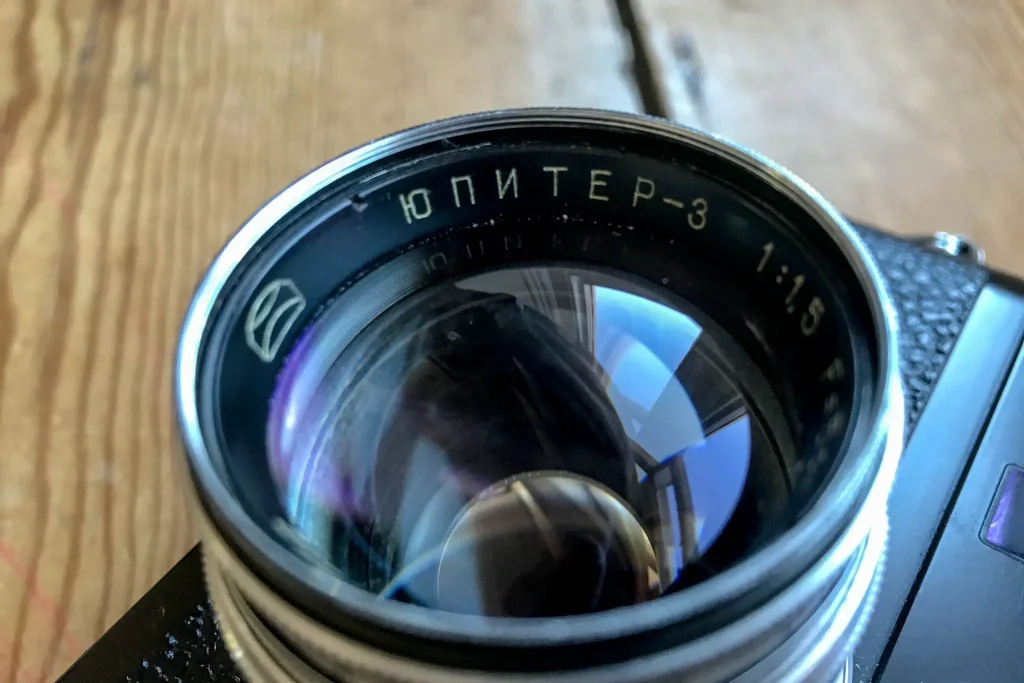
Buying a Jupiter-3
Prior to buying this lens, I must admit I went around in circles a few times about what I was looking for. My first instinct was to attempt to find a clean one. As it turned out, this was harder than I expected it to be…
“Cleaning marks”
I don’t think I have yet found an eBay listing for a Jupiter-3 that doesn’t mention “cleaning marks” on either front, rear or both elements Now, just to tangent for a second about the phrase “cleaning marks”… It seems to me that by using a positive word like “cleaning” there is some sort of implied idea that the damage is only a product of care. What people mean when they say cleaning marks is that the coating on the outer surface of the elements is damaged with usually lots of little scratches. This sentence is then often followed by with the words “…that don’t impact on the image quality”. It strikes me that any damage to a lens is going to have some impact – it’s just quite safe to assume that the impact of a few light scratches to the coating of a lens will probably be fairly minor.
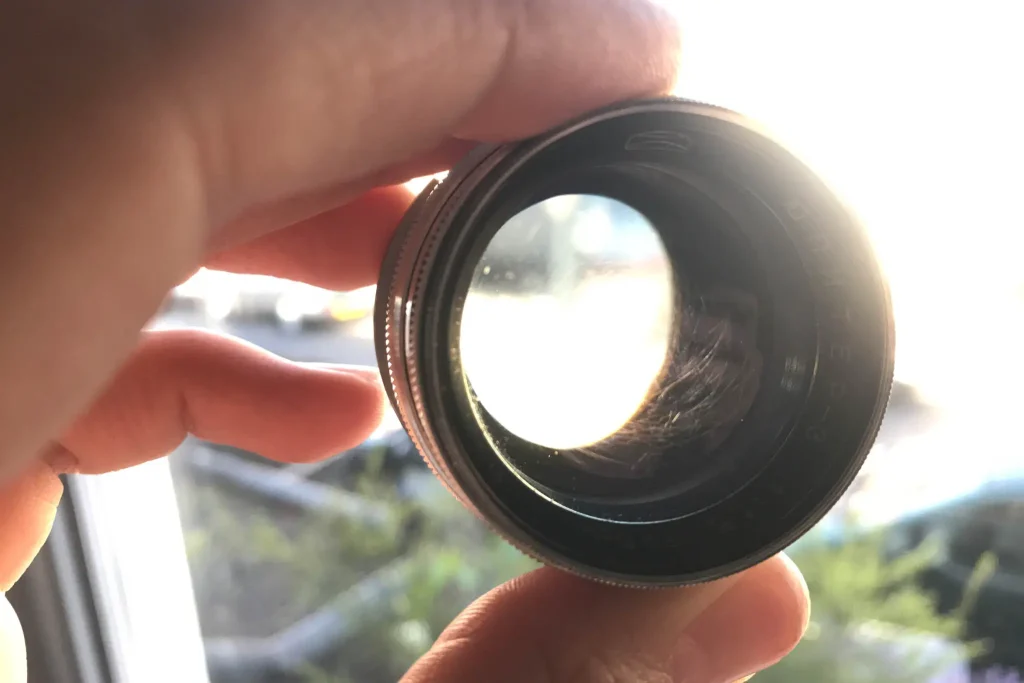
Minimum investment
To this end, I concluded that finding a lens that lacked cleaning marks might not be worth my while. Especially – as I have already mentioned – I’m trying to be a little bit more budget conscious at the moment. I also figured that I’ve already experienced what a perfect Jupiter-3(+) can do. I know broadly what I can achieve by throwing the maximum amount of cash at one, so the question became about what I could achieve by throwing the minimum amount of cash at one…
Finding a flawed lens
… and so the search for a flawed lens started. This search actually started back before I bought the first Jupiter-8. It was finding a dodgy Jupiter-3 that had me get in touch with Brian Sweeney. As it transpired, he convinced me not to buy that particular lens and to instead pursue the Jupiter-8 route – a route that has recently found its conclusion with a very nicely modified Jupiter-8 coming back from Brian – more on that next time…
Since then I’d retained the saved search on eBay, just casually looking out for a Jupiter-3 with a flaw that might be fixable, or at very least liveable. I set myself a spending limit of £100, and read pretty much every auction listing for a Jupiter-3 until one popped up that piqued my interest. Have a read of this description:
“Jupiter 3, the most sought after Russian Zeiss Sonnar copy. This lens is light, small, has a stepless aperture ring that is one finger operated and a smooth free focus ring that is likewise a one finger operation. It lets in a lot of light and is soft wide open and very sharp by f4. The colour is beautiful and the bokeh is to die for, it has 13 aperture blades that are oil free, the glass is fungus free with little dust and you have to try very hard to notice any minor cleaning abrasions present on the front glass.
It focusses to infinity and down to short of one meter. The aperture markings do not lign up with the dot on the housing.
I was immediately impressed by the micro contrast evident in this lens as it easily portrays that almost 3d Zeiss pop quality, you feel you can walk into a scene or take hold of an object.”
“Cleaning abrasions” – marks won there for mixing things up a little and not calling them “marks”… But what about this particular sentence:
“The aperture markings do not line up with the dot on the housing.”
This struck me as particularly interesting since after I’d tinkered with my Jupiter-8 to allow for better close focusing, I had a similar issue with aperture markings not lining up. Jupiter-3 lenses – being of the same Russian provenance as the Jupiter-8 – are also prone to not focusing perfectly on Leica cameras. This is, in fact, one of the main reasons I state in my Jupiter-3+ review for punting the extra cash for a new one – that and the 0.7m close focusing. Actually – just to kick another quick tangent – having gone through the experience of buying an old Jupiter-3, I’d now more fervently add “to avoid cleaning marks” to my list of reasons to go for a New Jupiter 3+ lens – though it’s academic now as they’re sold out, and seem to be quite hard to find.
Anyway, regardless of all that, the chap who wrote the description above wrote the bit about the aperture markings not lining up as a flaw. Had I not known what I’d discovered tinkering with a Jupiter-8, I’d have read it as a flaw too. And – I guessed – other people would read it in that way as well. This had me wondering; had I inadvertently found a Jupiter-3 which had already been modified, but yet might go for cheaper because it was being sold as flawed? Or was it just a flawed lens? I decided that if I could get it for less than £100 it was definitely worth finding out.
Fortunately, I’m rubbish at sticking to my own self-imposed rules about bidding on eBay. In the last moments, I decided I really wanted it and put a higher bid in. £101 had it won!
Testing the flawed lens
The first thing I did when the lens arrived was to inspect this misaligned aperture scale. I was hoping to find that it didn’t line up properly in the same way as my tweaked J-8. This wasn’t the case – in fact, it’s the other way out of whack.
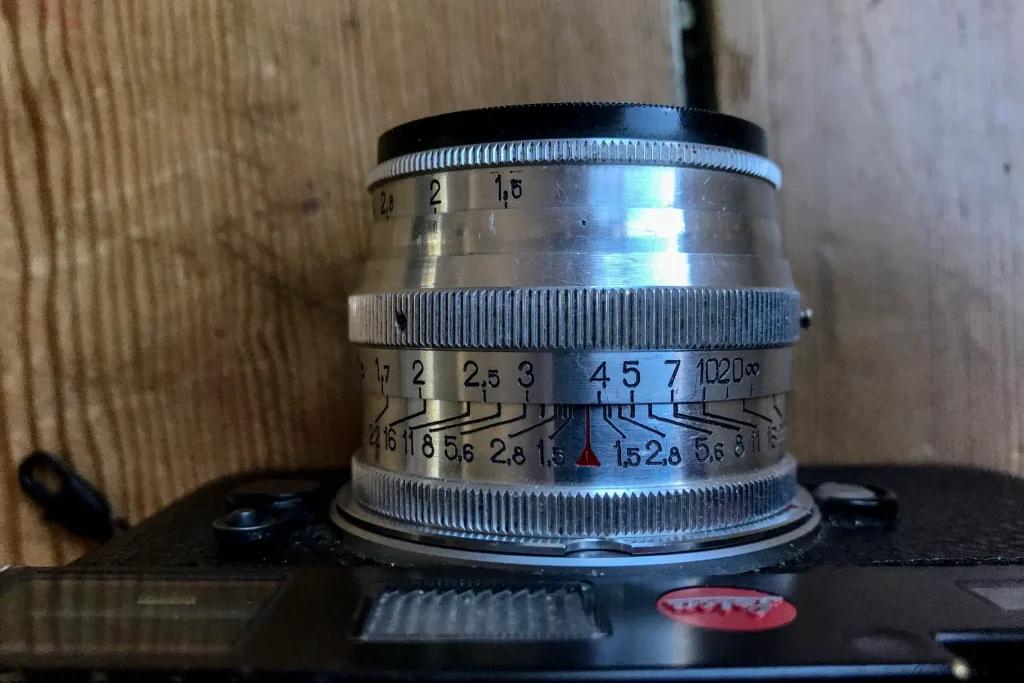
I felt this didn’t bode well, so with some trepidation I mounted the lens and went about testing it for rangefinder accuracy on my Leica M9. This was the result:

At 1m and f/1.5 I focused on the middle of the ‘M’, as you can see it does back focus a touch, but it’s pretty bloody good! I’m not sure if this points to the idea that this lens has been modified, or if it was just like this from new, but one way or another, my £101 punt seems to have worked out ok in terms of close focus accuracy!
Shooting the flawed lens
So far my experience shooting it has been pretty good too! I’ve had some results I have been really happy with – especially when shot wide open close up.
It’s fair to say that it’s not as “sharp” as the Jupiter-8s I have shot with wide open – it doesn’t feel like it quite has the contrast needed to give that sense of sharpness I have found in the J-8s. Stopped down it improves, though at it’s worst, it still seems lacking in contrast.

I have tweaked these next two images a little to bring up the overall contrast, but you can still see how low the lens contrast is wide open, and relatively speaking how low it remains even after stopping down.
Shooting it wide open seems to bring greater potential for veiling flare than the Jupiter-8 can suffer too – there’s a good bit of “glow” too.

Whether or not these traits are a bad thing is going to come completely down to taste, but for me, the difference between the Jupiter-8s I have played with and the Jupiter-3 I have here is probably best described as giving me a different sense of how much control I have over the outcome.
With this Jupiter-3 I have felt like I’ve found myself a little less in control of the photographic outcome, and more like the lens is in charge. With the Jupiter-8 the impact of the character felt more like something to control and harness, with Jupiter-3 it’s felt a little more like I just have to let the character happen and deal with the consequences. I suppose this is the nature of the lens formula being pushed closer to its limitations – it just feels less predictable.
Ultimately…
I think it’s fair to say that I am very pleased with this purchase. It was always going to be hard to find a lens that lived up to the wonders of the New Jupiter-3+ lens I tried a while back, but – thanks to it focusing well at 1m wide open – I think I’ve done alright, especially for my £101
I must say though, my preference overall is still for the best of the Jupiter-8 lenses I’ve shot with over this particular Jupiter-3. My Jupiter-8 lenses just seem a little higher in lens contrast. This results in images that are a bit less muddy, whilst still having the Sonnar feel I am after.
That being said, looking back at the new Jupiter-3+ images – it’s clear to see that the jupiter-3 I now own isn’t performing quite as well as the potential of the formula. It just strikes me that if I need to spend all that cash just to equal the Jupiter-8 I currently own and love, the Jupiter-8 is probably still the more sensible option – especially as I’m not looking for the extra light gathering gains the f/1.5 max aperture of the Jupiter-3 brings.
Where next?
As I said at the beginning of this post, I’ve meandered my way into the idea that I’m collecting these lenses rather than walking a path to find a perfect classic Sonnar, but – without wanting to give anything away – I think this experience, combined with that of the time I’ve spent with Jupiter-8 lenses as solidified ideas about where I am going to go next with this. That being said, I need to save some pennies before I can take the next step…
As for the next instalment; that will no doubt be a post rounding off my experiences with the Jupiter-8 with my Brian Sweeney modded LTM Jupiter-8M.
Share this post:
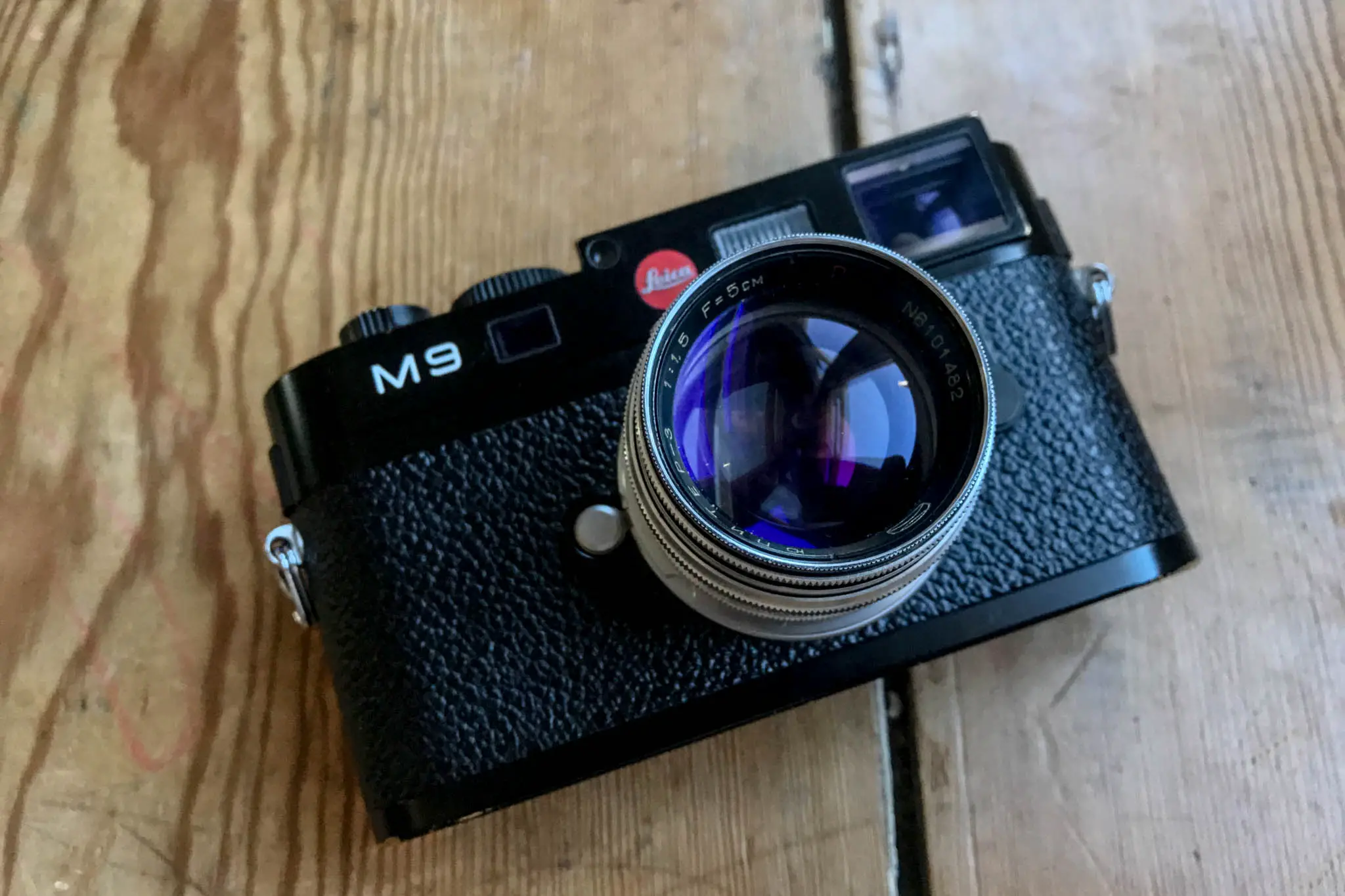




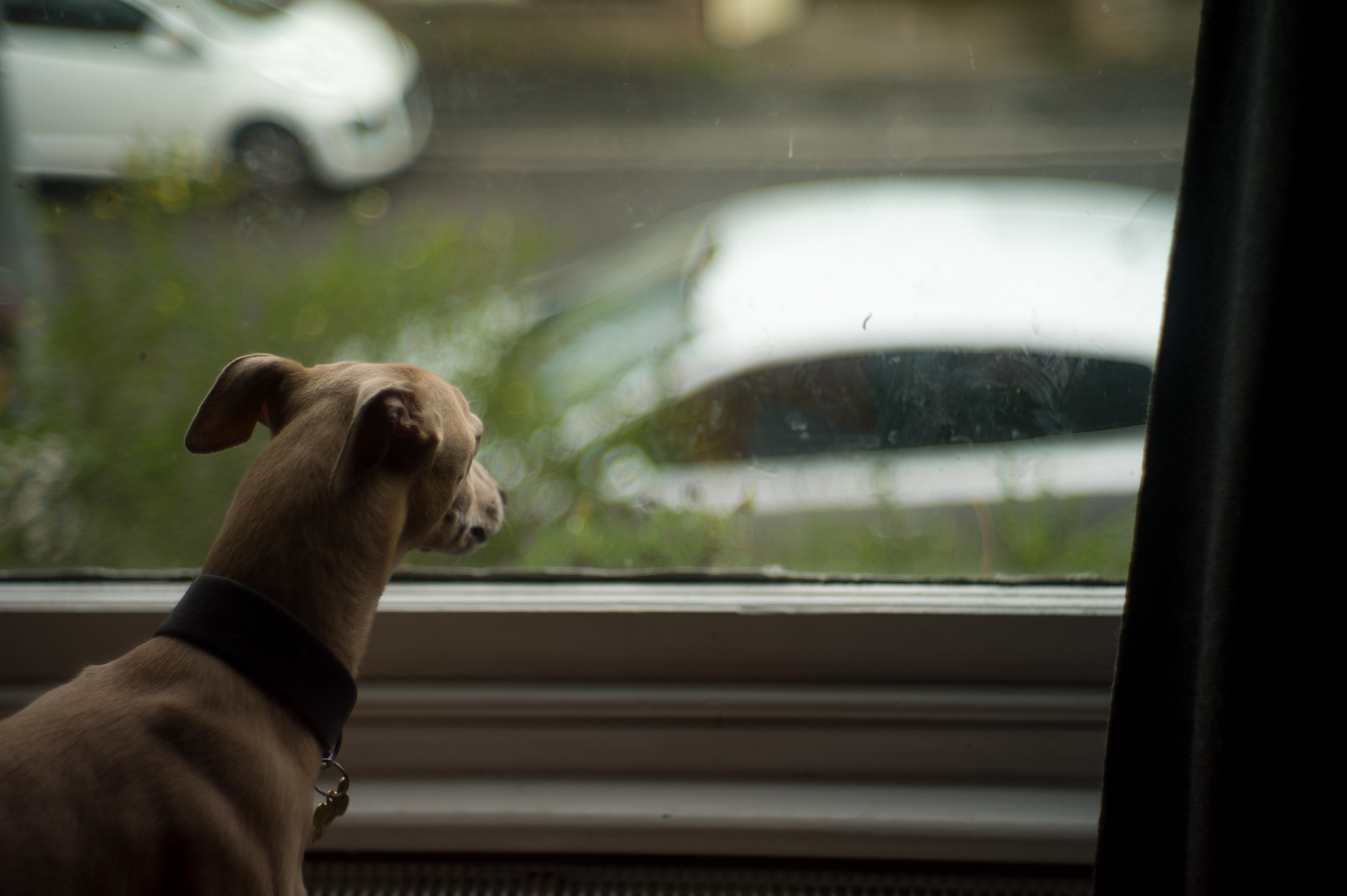












Comments
George Appletree on Jupiter-3 Review – Experiences with a flawed copy – Finding my Perfect Classic Sonnar – PT7
Comment posted: 18/06/2017
Also, of course, it is the factor of handling or whatever makes you feel comfortable with, price and so on. If that fits your requirements perhaps it's not so important how exactly photographs come out.
In your case "Sonnar" is the main requirement, and for that you would have your own reasons.
If making the calculation that nine Jupiters perhaps costs one twentieth one Noctilux does, actually it's worth the perfection.
But other than that many lenses can give good results and the M9 is not such a so bad device for the task
Comment posted: 18/06/2017
Comment posted: 18/06/2017
Comment posted: 18/06/2017
Comment posted: 18/06/2017
Aivaras on Jupiter-3 Review – Experiences with a flawed copy – Finding my Perfect Classic Sonnar – PT7
Comment posted: 18/06/2017
Comment posted: 18/06/2017
Hernando on Jupiter-3 Review – Experiences with a flawed copy – Finding my Perfect Classic Sonnar – PT7
Comment posted: 19/06/2017
Comment posted: 19/06/2017
jeremy north on Jupiter-3 Review – Experiences with a flawed copy – Finding my Perfect Classic Sonnar – PT7
Comment posted: 19/06/2017
Have you investigated the Planar? Maybe that could be the next project. Then the Biogon. I'll be happy to help out.
Comment posted: 19/06/2017
Brian on Jupiter-3 Review – Experiences with a flawed copy – Finding my Perfect Classic Sonnar – PT7
Comment posted: 26/06/2017
On the Jupiter-3: the cleaning marks have the biggest impact on contrast, use a good hood with it. My "Cherry-Picked" keepers have perfect front-elements, mostly because the focus was so far off that the lenses had never been used. Including two from 1950 and another from 1952. Two of those- transplanted the glass to new barrels, the old ones were the wrong length. Most of the "perfect-Glass" J-3's required much thicker shims. On yours- if you use a slightly thicker shim, or move out the variable-stand-off ring to align the aperture with the index: the back-focus will be reduced.
I ended up converting the 1936 Sonnar/1953 J-3 Hybrid to LTM,
https://www.flickr.com/photos/90768661@N02/albums/72157680487323794
Coated rear group from the J-3, those from the KMZ lenses are interchangeable with the pre-war and wartime Sonnars. Too bad you don't live closer! i don't have all the Sonnar variations, but have most of them.
Comment posted: 26/06/2017
Stuart lloyd on Jupiter-3 Review – Experiences with a flawed copy – Finding my Perfect Classic Sonnar – PT7
Comment posted: 30/10/2018
Skyllaney restored Jupiter-3 Review - Exploring the Classic Sonnars pt.11 - 35mmc on Jupiter-3 Review – Experiences with a flawed copy – Finding my Perfect Classic Sonnar – PT7
Comment posted: 15/06/2020